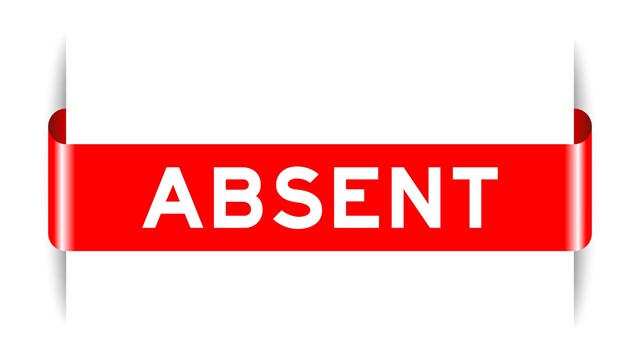When someone moves into a community, they often look for the friendliness and camaraderie that living in an association brings. But with many personalities often butting heads on everyday living situations, it can often get tense and things can go awry. Neighbors argue with each other, associations complain about residents, and residents complain about associations. Minor issues can often be settled quickly and cordially without involving anyone beyond the disagreeing parties. But that's not always the case. And when it isn't, things get tricky.
Alternative Options
Many disputes can arise between residents—anything from noise and assessments, to common area usage or differing interpretations of bylaws, says Matt Lacy, a liaison for the American Arbitration Association (AAA). Problems between residents have a greater chance of being resolved quickly, since association managers can act as a third party. A good association manager can often use his or her authority within the building to resolve an issue without the need of outside help.
ADR
Disputes between residents and boards can be more complicated. Emotions can run high if residents feel wronged by a board's use of their authority, and if a resolution can't be reached, the use of an association manager as a third party can also prove to be problematic, since managers by necessity work closely with boards, and may give residents the impression of partiality to board concerns. Due to such conflicts of interest, the opposing parties are often better off seeking outside help in such a situation.
Alternative dispute resolution (ADR for short) has been gaining popularity in recent years as an effective problem-solving method—partly because of its results, and partly because of the logjam of court cases already wending their way through the system. ADR can be a powerful tool to cut through red tape and legal entanglements to get real results.
The problem-solving process should start with the association manager doing what he or she can to diffuse the situation. Most conflicts—even difficult ones—can be guided toward settlement by a competent, level-headed association manager. For example, in the case of a noise problem, a solution might be to speak with the individuals in dispute, installing some soundproofing measures, like carpeting or foam insulation, or setting reasonable hours if the sound relates to music playing or construction work and the like.
The Nevada Real Estate Division has information about ADR, which can be found by visiting this link.
Getting Help
If two parties can't achieve detente on their own or with the help of their community's manager, an outside referee or authority may be needed. If parties are willing to try ADR, it's not always necessary to lawyer up and start litigating, even if early attempts at a resolution have been unsuccessful.
The best first choice of ADR is simple mediation. Essentially, this involves the disputing parties sitting down with an appointed, impartial third party—often, but not always an attorney or professional mediator—and presenting their respective issues in a moderated setting.
“The parties are free to select whoever they think would most effectively resolve the dispute among them,” says Eric P. Tuchmann, general counsel and corporate secretary for the AAA. “Frequently, but not always, mediators are selected who have some background in the subject matter of the dispute. So in the case of a dispute involving a condo association or community association, the parties may want a mediator with a real estate background. If there are legal issues in disputes, there may be a particular interest in having a lawyer serve as the mediator.”
Tuchmann goes on to say that unlike a judge, a mediator has no authority to bind a party to an outcome. If a solution is reached, a binding agreement is often drawn up, but the mediator has no official power to create that agreement. It must come through the disputing parties. “He or she is there to help them come to their own solution,” Tuchmann says, adding that some forms of ADR “Have very limited appeal rights, which makes it an attractive feature for some people because that means they’re not going to have to go through 20 years of appeal [like in litigation.]”
Ultimately, unless required by law or mandated by an insurer, it’s up to the parties involved to decide if they are going to create that binding agreement that they both agree to follow. It could be a monetary solution, or something different that satisfies both parties, says Tuchmann.
At the end of mediation, the mediator will either say an agreement has been reached and will help the parties create a binding agreement, or the parties will agree that a solution was not reached, and they may opt to press on with a lawsuit. That’s usually not necessary, however. ADR has shown to be effective in preventing lawsuits up to 85 percent of the time. The experts say that once the two parties begin talking to one another that is the first step towards laying some common ground that might lead to a resolution.
Taking the Next Step
Despite the impressive success rate of ADR, sometimes mediation alone isn't enough to settle a particularly technical or long-running dispute. “Unfortunately, if the issues are so technical, or people simply can't agree, that's when you see people filing for arbitration,” says Lacy.
Arbitration involves much more legwork than mediation, and oftentimes comes as a last ditch effort to avoid the exorbitant fees of going to court. Unlike mediation, arbitration is legally binding, and once the settlement is determined by the arbitrator, neither side can alter it in any way. They are simply legally obligated to follow it. Though it's not a formal lawsuit, both parties will still almost always need legal counsel in order to enter arbitration, and they are responsible for the arbitrator's fee. It's not cheap, but it still pales in comparison to fees incurred from lawsuits.
“Arbitration is an informal judicial hearing where the parties at odds with one another meet before an arbitrator who hears their arguments and makes a judgment similar to what the judge would say in a courtroom,” says Wendell Smith, a senior partner at Greenbaum Rowe, Smith & Davis, LLP, in Woodbridge, New Jersey and the lead author of New Jersey Condominium and Community Association Law, a guidebook on the rules and regulations governing condo associations and HOAs in the Garden State. “The decision from the arbitrator is binding. Non-binding arbitration is when the arbitrator makes a decision that isn’t binding, but if it’s not appealed within 45 days, it becomes binding.”
The Cost of Compromise
Mediators charge an hourly rate usually less than or equal to the average rate of an attorney— usually around $250 per hour—and the opposing parties split the cost. Unlike litigation, which can drag on for years and run up billable hours to an alarming degree, ADR agreement can be reached in as little as one day. “Mediation gets a neutral independent third party involved, where they can confidentially talk to all parties involved and work out a settlement,” says Lacy. “Generally mediation's cheaper, if you're able to get it settled that way. AAA would encourage mediation for these kinds of disputes.”
While mediation can often include the counsel of attorneys, it doesn't have to. Since arbitration is binding, both parties will almost always require legal aid. Arbitration tends to last a few days, and Lacy recommends that a building should establish guidelines on how costs will be covered before, so it's not a sticking point when the arbitration process begins.
To find a mediator and start the process rolling, any party or parties to a dispute may voluntary initiate a mediation under the auspices of the American Arbitration Association (www.adr.org) or work with a private ADR company. Through the AAA, there is no filing fee to initiate a mediation or a fee to request the AAA to invite parties to mediate. The cost of mediation is based on the hourly mediation rate published on the mediator’s AAA profile. This rate covers both mediator compensation and an allocated portion for the AAA’s services. All expenses of the mediation, including required traveling and other expenses or charges of the mediator, are borne equally by the parties unless they agree otherwise. The expenses of participants for either side are paid by the party requesting the attendance of such participants. Private mediation companies may charge differently, so be sure to ask.
Living Together
There are countless cases of successful mediation and arbitration each year involving arguments between associations and their members. Parking disputes, election disputes, satellite dish cases, landscaping cases and cases of all kinds are successfully mediated and/or arbitrated all the time. Compromise keeps the machine of a multifamily community running smoothly. And whomever you talk to you—attorneys, arbitration experts, mediators—will tell you the same thing: the less willing you are to compromise, the more difficult any process will be. The longer you hold out, the more you will pay, and the more damage will be done to personal relationships and your community at large.
The underlying truth of ADR is that when people sit down and really start talking to one another, they understand what’s important and worth fighting for, and what isn’t. Alternative dispute resolution offers that opportunity to talk, listen and live harmoniously in the same community.
Associate Editor Hannah Fons contributed to this article.







Leave a Comment